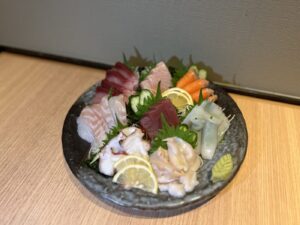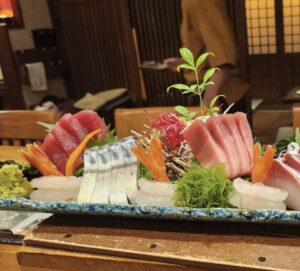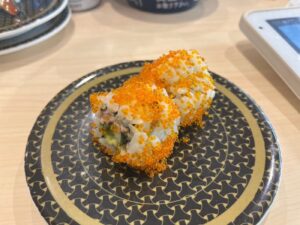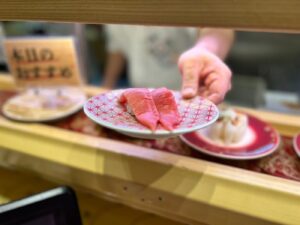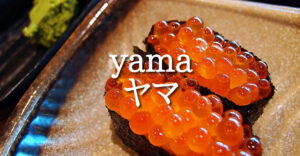When you visit “Kura Sushi,” you’ll be amazed by the unconventional approach to traditional conveyor belt sushi. As someone from the middle generation, I felt this way, possibly due to the differences in needs depending on the age group. However, for the younger generation, it might be a common service. But inside, I saw customers from various generations, genders, and combinations, including the so-called “Baa-san Sannin-gumi” (a group of three elderly ladies) and solo office workers. In other words, it might be a modern staple service that you’d miss out on if you didn’t know about it.
To be honest, I leaned more towards considering the pricing of around 100 yen per plate as too cheap, rather than a great deal. So, I had never visited such establishments, including similar ones. However, once I stepped inside, just like a food court, I realized that I could address various needs by taking action myself, and the notion of “cheap and not good” quickly disappeared.
I visited “Muten Kura Sushi.” Just from the name, I got the impression that they were particular about ingredients and health-conscious, so I mustered up the courage to stand in line. That’s right. Even on weekdays during lunchtime, it was quite crowded, and if you took a number ticket, you might have to wait for several hours. For those who can’t afford to wait, it might be better to visit during non-meal hours when everyone else isn’t dining.
Recently, even conveyor belt sushi restaurants have adopted touch-panel ordering as the standard. You can select what you want to eat, choose the quantity, and even customize your order without the need for cumbersome interactions with the staff. Very efficient. When the ordered items arrive, there’s a buzzer sound, and you retrieve them accordingly. After finishing your meal, you toss the empty plates into the collection slot. When you accumulate five plates, the roulette starts. If you manage to get a “hit,” you receive original merchandise in a gachapon capsule. Children encourage eating more for the chance to get these prizes, and parents reluctantly comply. Moreover, the system where plates can be collected before customers finish eating impressed me with its simplification of service and smooth customer flow.
As I proceeded to pay, a corner featuring popular anime merchandise appeared, and I ended up paying about 10% more than my bill. Of course, I must admit that it’s my own fault for succumbing to this, and I’m not complaining about it.
The Origin of “Kura Sushi”

The company that operates the conveyor belt sushi chain store “Muten Kura Sushi” was founded in May 1977 in Sakai City, Osaka. It still has its headquarters in the same location and is known as Kura Corporation. The origin of its name goes back to the childhood memories of the company’s president, Mr. Kunihiko Tanaka. He recalls looking at a storehouse and feeling excited about what might be inside. It makes sense, as Mr. Tanaka’s hometown is Kurashiki City in Okayama Prefecture, known as the “City of Storehouses.” Hence, the name “Kura” was chosen with the intention of invoking dreams and excitement for visitors. Just as it was then, children today entice their parents with excitement: “Let’s go to Kura Sushi.” Sushi, toys, souvenirs—Kura Sushi captivates the hearts of children. Parents, who can only indulge in family outings on weekends, will endure waiting for hours to go to Kura Sushi.



